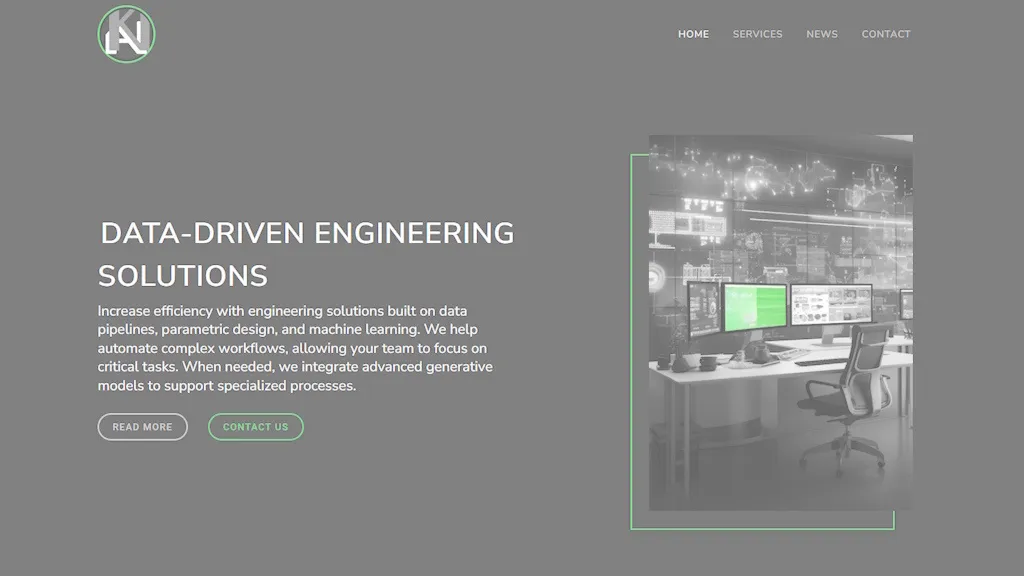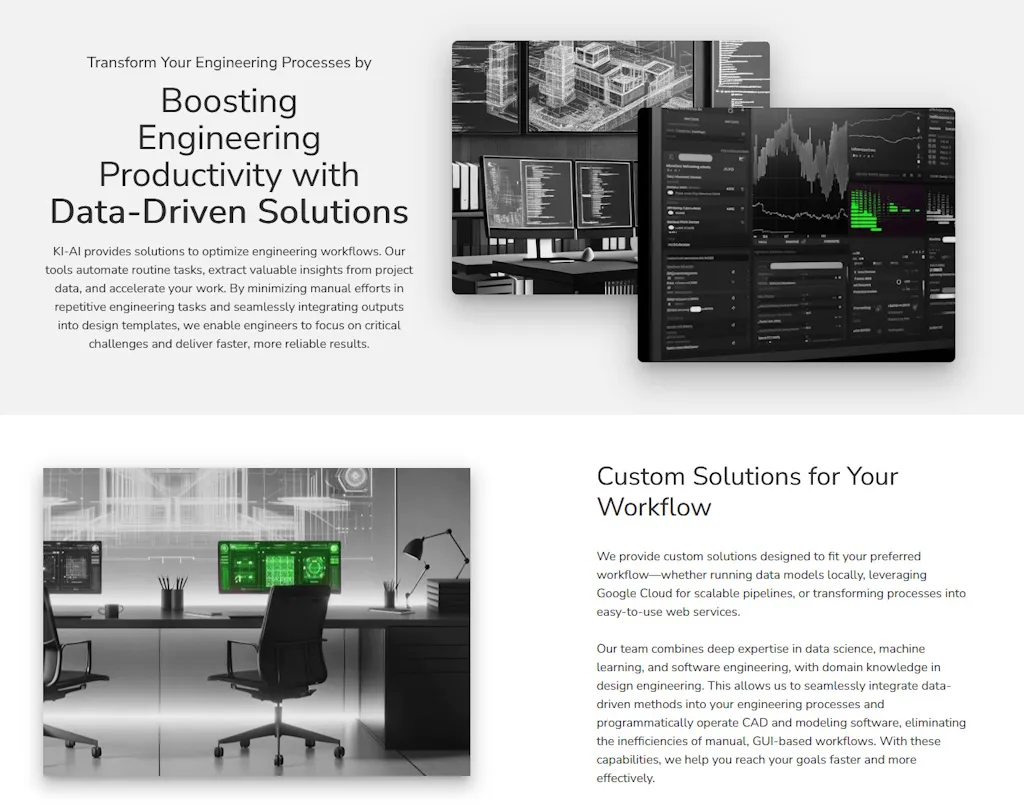The First Year of KI-AI

Founded on November 23, 2022, KI-AI began just days before the public launch of ChatGPT, putting us at the heart of a significant technological shift. We had planned the vision for KI-AI for almost a year before we launched. The main idea was to utilize machine learning to automate engineering tasks. However, the massive hype around generative AI naturally led us to actively explore the capabilities of LLMs. This past year has been filled with innovation, learning, and growth, and we're happy to highlight some key milestones.
Throughout the year, we've focused on building a solid foundation for our solutions. This includes developing data mining pipelines crucial for parameterizing design data. Our pilot projects, creating optimization tools powered by basic machine learning and efficient software coding, have proven the value of our algorithmic solutions in design engineering and helped set our future goals.
Note: This article was originally published on the KI-AI website. KI-AI merged with Crestia on December 2, 2024. Learn more: Crestia Expands AI Capabilities with KI-AI Merger.
One major area we've explored is the potential of large language models (LLMs) and the development of Retrieval-Augmented Generation (RAG) systems using user data. By working with open-source LLMs like Llama 2 and Mistral, we've run models on-premises, exploring their capabilities and evaluating different approaches, such as leveraging RAG and fine-tuning. These experiments have provided valuable insights into AI-driven language processing, laying a strong foundation for future advancements in natural language processing (NLP) for design automation.
We believe AI will continue to transform the engineering industry, and we’re proud to contribute to this shift. Our focus remains on creating innovative solutions that help engineers solve complex problems more efficiently.
Thank you to all our stakeholders for a remarkable first year. Here’s to an exciting 2024!

KI-AI provides solutions to optimize engineering workflows. Our tools automate routine tasks, extract valuable insights from project data, and accelerate your work. By minimizing manual efforts in repetitive engineering tasks and seamlessly integrating outputs into design templates, we enable engineers to focus on critical challenges and deliver faster, more reliable results.
Our current service offering includes a 3D Model Builder Tool. Our BIM management tool uses parametric design to streamline 3D modeling tasks. With automation based on machine learning, you can systematically leverage insights from previous projects, enabling better design decisions. ML-Powered Engineering is central to our offering. Automating repetitive engineering tasks with machine learning reduces your team’s manual workload. Our data-driven approach and custom pipelines streamline the process, allowing engineers to focus on higher-level design challenges. We provide Automated Document Processing. We automate document workflows by extracting data from images, PDFs, and other files using generative AI. New design documents are generated from data pipelines, ensuring accurate and efficient management with minimal manual effort.
We provide custom solutions designed to fit your preferred workflow whether running data models locally, leveraging Google Cloud for scalable pipelines, or transforming processes into easy-to-use web services. Our team combines deep expertise in data science, machine learning, and software engineering, with domain knowledge in design engineering. This allows us to seamlessly integrate data-driven methods into your engineering processes and programmatically operate CAD and modeling software, eliminating the inefficiencies of manual, GUI-based workflows. These capabilities help you reach your goals faster and more effectively.
Looking for expert solutions? Discover Crestia’s professional services today.